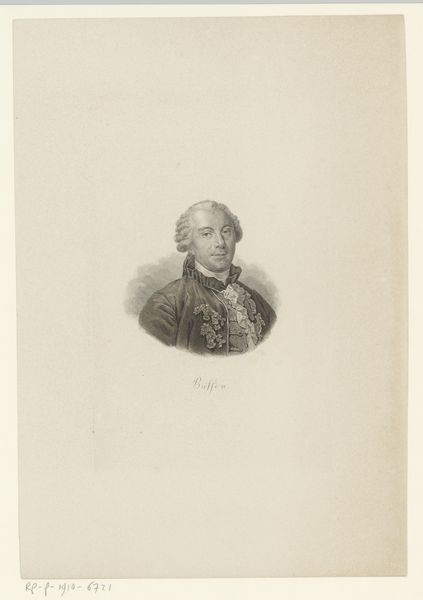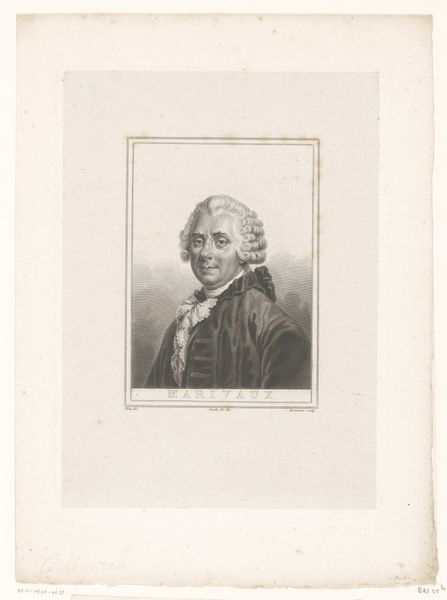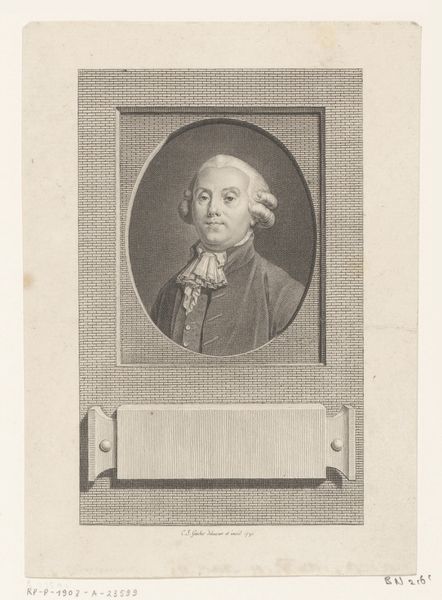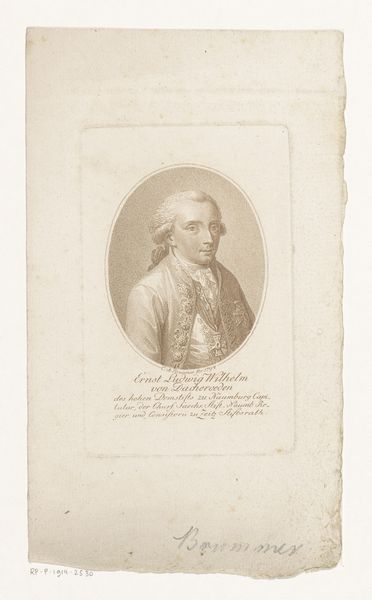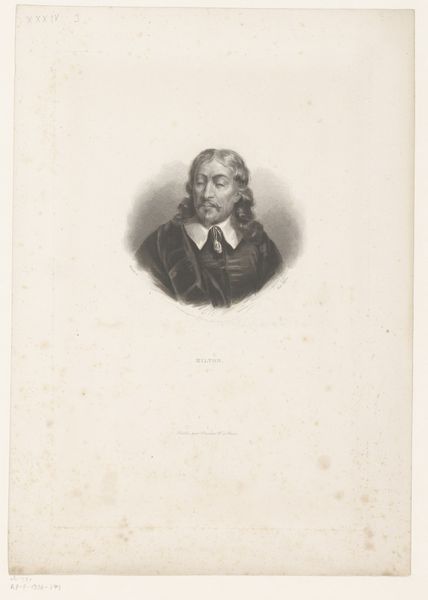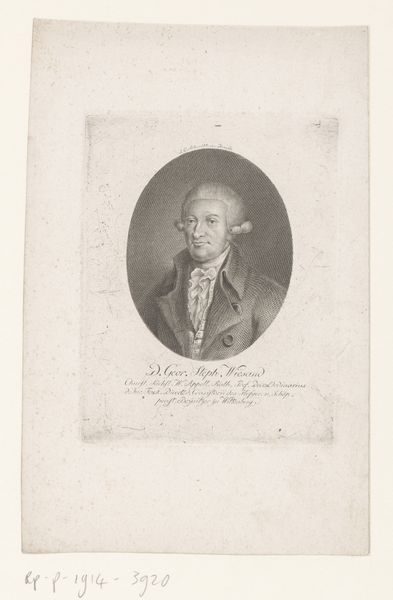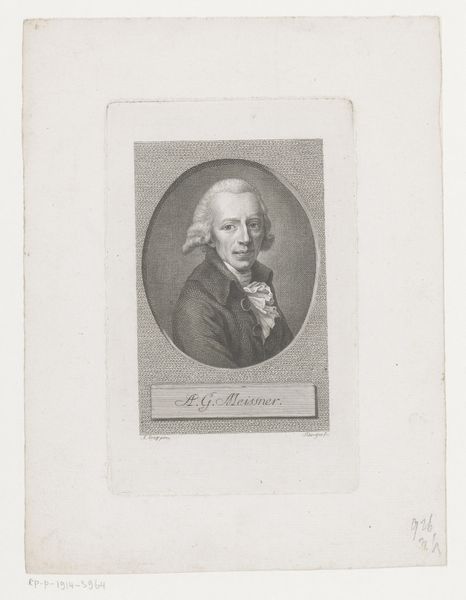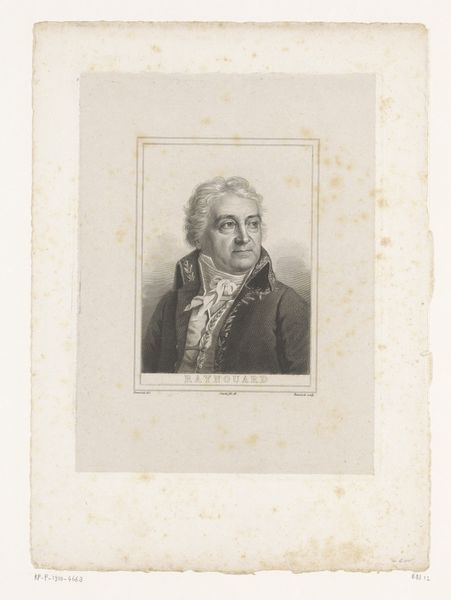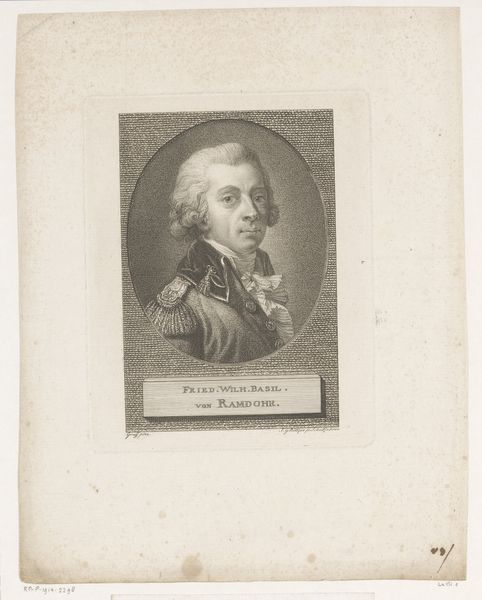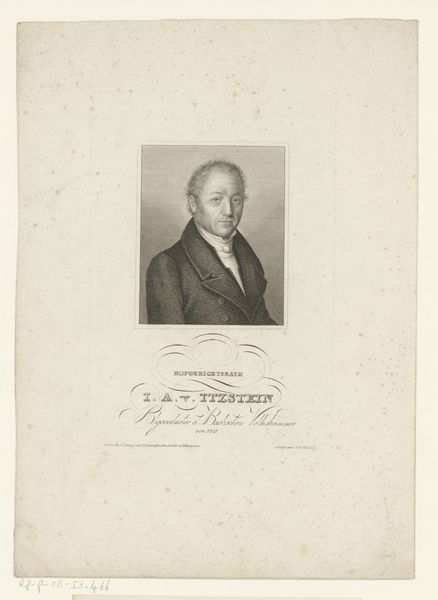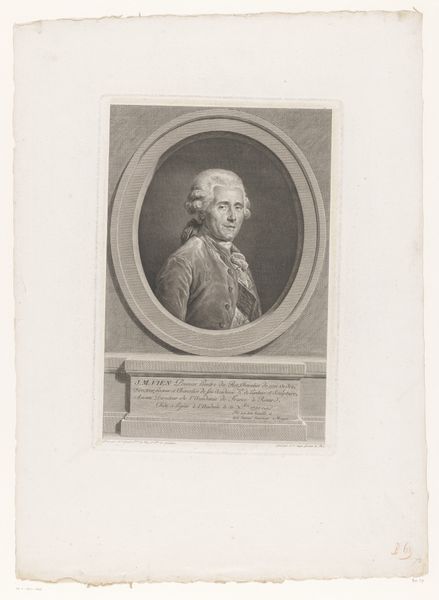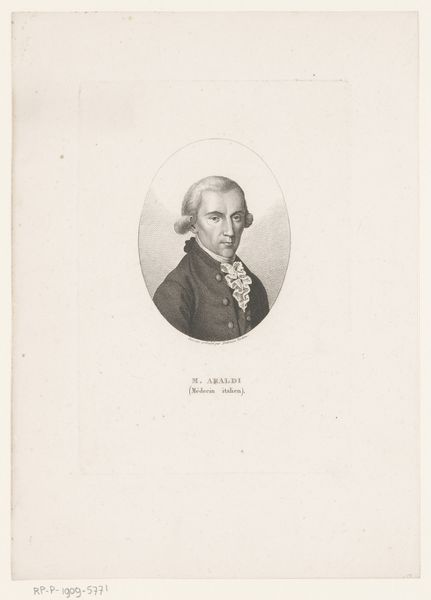
engraving
#
portrait
#
history-painting
#
engraving
#
realism
Dimensions: height 220 mm, width 167 mm
Copyright: Rijks Museum: Open Domain
Alexandre Massard made this print of Jacque Marie Boutet using engraving, an intaglio printmaking technique. This means the image was incised into a plate, likely copper, with a tool called a burin. Look closely, and you’ll notice the network of fine lines that create tone and shadow. This is achieved through the careful, controlled action of the engraver’s hand, pushing the burin through the metal. The depth and density of these lines determine how much ink is held, and thus how dark that area appears when printed. Engraving has a deep history in both art and industry. Before photography, it was crucial for reproducing images and illustrations, spreading information widely. But it was also a highly skilled craft, demanding years of training. So, in this portrait of Jacque Marie Boutet, we see both the meticulous labor of the artisan and the rise of mass media – a fascinating intersection of art, technology, and social communication. By considering these aspects, we gain a richer understanding of the print and its place in history.
Comments
No comments
Be the first to comment and join the conversation on the ultimate creative platform.
